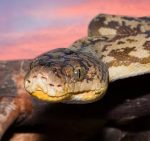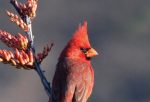You know that obscene revolting troll who comes by every once in a while with a new pseudonym, who then drops a torrent of racist, anti-semitic, misogynistic, homophobic, and transphobic comments? And then I have to take a few minutes to delete every one of his abusive comments, and ban another pseudonym?
Imagine if I didn’t carry out that last step. Most of you wouldn’t be coming back, and the nastiness would pile up without end until all value in the conversation was lost. Curating and policing the comments section is an essential part of running a site.
Or imagine a grocery store where no workers responded to those “clean up on aisle 5” requests. It would quickly become a filthy, neglected garbage dump that no one would want to shop at.
You can stop imagining. All you need to do is observe Twitter in the near future.
An emboldened cast of anonymous trolls spewed racist slurs and Nazi memes onto Twitter in the hours after billionaire industrialist Elon Musk took over the social network Thursday, raising fears of how his pledge of unrestricted free speech could fuel a new wave of online hate.
Twitter has struggled to enforce its rules against harassment and extremism, and the company has not yet published any broad-scale changes to its content-moderation policies.
But Musk, a self-described “free speech absolutist,” has fiercely criticized the company’s previous leaders as overly rigid and suppressive and said he would work to overturn some of the company’s main enforcement mechanisms, such as indefinitely suspending accounts.
Already. The trolls leapt into furious masturbatory action at the first opportunity.
“Elon now controls twitter. Unleash the racial slurs. K—S AND N—–S,” said one account, using slurs for Jews and Black people. “I can freely express how much I hate n—–s … now, thank you elon,” another said.
Thanks so much, Elon.
One account, created this month, included a Nazi swastika as its profile picture and retweeted quotes from Musk alongside antisemitic memes. Another tweet, showing a video montage glorifying Nazi Germany with the comment, “I hear that there have been some changes around here,” was liked more than 400 times.
Racial slurs were posted rampantly overnight. One single-word tweet, showing a single racial slur in all capital letters, was retweeted more than 500 times and liked more than 4,000 times. It was tweeted at 9 p.m. Thursday night and remained online nearly 12 hours later.
Twitter was never particularly responsive to racist trolling, and I would guess that now, when the employees are looking at only a 1 in 4 chance of being retained, they are even less motivated to do a cleanup. I can tell you as someone who maintains a teeny-tiny site on the internet, keeping it tidy and functional requires constant vigilance.
Hey, advertisers! Unless you’re selling MAGA hats, Confederate flags, and chloroquinone — that is, those kinds of trolls are your customers — I don’t think Twitter is going to be a useful medium for long. The only good part of that sentence is the idea that Musk just burned up $44 billion dollars.
Wonder how advertisers are going to like the n word app pic.twitter.com/c1UizfHRmQ
— The Serfs (@theserfstv) October 28, 2022
Noted.










